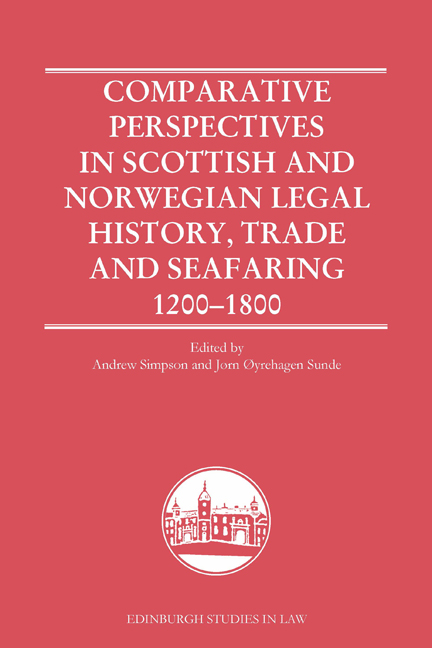1 - The Treaty of Perth: Union of the realm and the king’s law
Published online by Cambridge University Press: 17 November 2023
Summary
A: INTRODUCTION – THE NORWEGIAN-SCOTTISH STRUGGLE OVER THE ISLANDS IN THE WEST
Every king in medieval Europe wanted to expand their realm. Kings tried to subjugate or conquer new territories and ethnic groups beyond their original core territory. New territories gave kings increased incomes in taxes and other duties from the subjects, together with trading opportunities and potential strategic gains over rivals. In the Norwegian case, the core territory of the kingdom was united during the tenth and eleventh centuries. A king's space of action in “foreign policy” could be affected or decided by the existence of domestic and foreign rivals. The Norwegian kingdom had its interests to the west, towards the territories to which ethnic Norwegians had emigrated; to the north, towards the arctic regions where different ethnic groups lived; to the east where there were disputed border regions with Sweden; and to the south and the Danish border territories.
The Treaty of Perth initiated, or was part of a decisive phase in, what we can call state-building in Norway in the middle ages. This article will discuss this process from the end of the thirteenth century into the first decades of the fourteenth century and then the further development into the late middle ages. The process created a political framework around Norwegian society, this being the Norwegian kingdom with its laws and this became a major catalyst for the emergence of Norwegian identity through the centuries. The Norwegian kingdom, with its laws, became even more important in the fourteenth and especially the fifteenth century when Norway had entered the Scandinavian Kalmar Union (from 1397). Politics, concepts and symbols became important realities when Norway as a political unit came under political pressure from stronger union partners. In a situation like that, Norwegians from different social groups filled political images and symbols with content that meant something for them in their daily lives.
King Håkon IV Håkonsson's reign (1217–1263) was characterised by the final defeat of domestic rivals to the throne and a systematic strengthening of the royal administration in Norway. A new law of royal succession was decided in 1260. Here, an almost automatic hereditary kingship was established. The basic principles of the law were one king, legitimacy and primogeniture. The king also initiated in the same year a revision of the Law of Frostating, one of Norway's regional laws.
- Type
- Chapter
- Information
- Comparative Perspectives in Scottish and Norwegian Legal History, Trade and Seafaring, 1200-1800 , pp. 35 - 62Publisher: Edinburgh University PressPrint publication year: 2023

